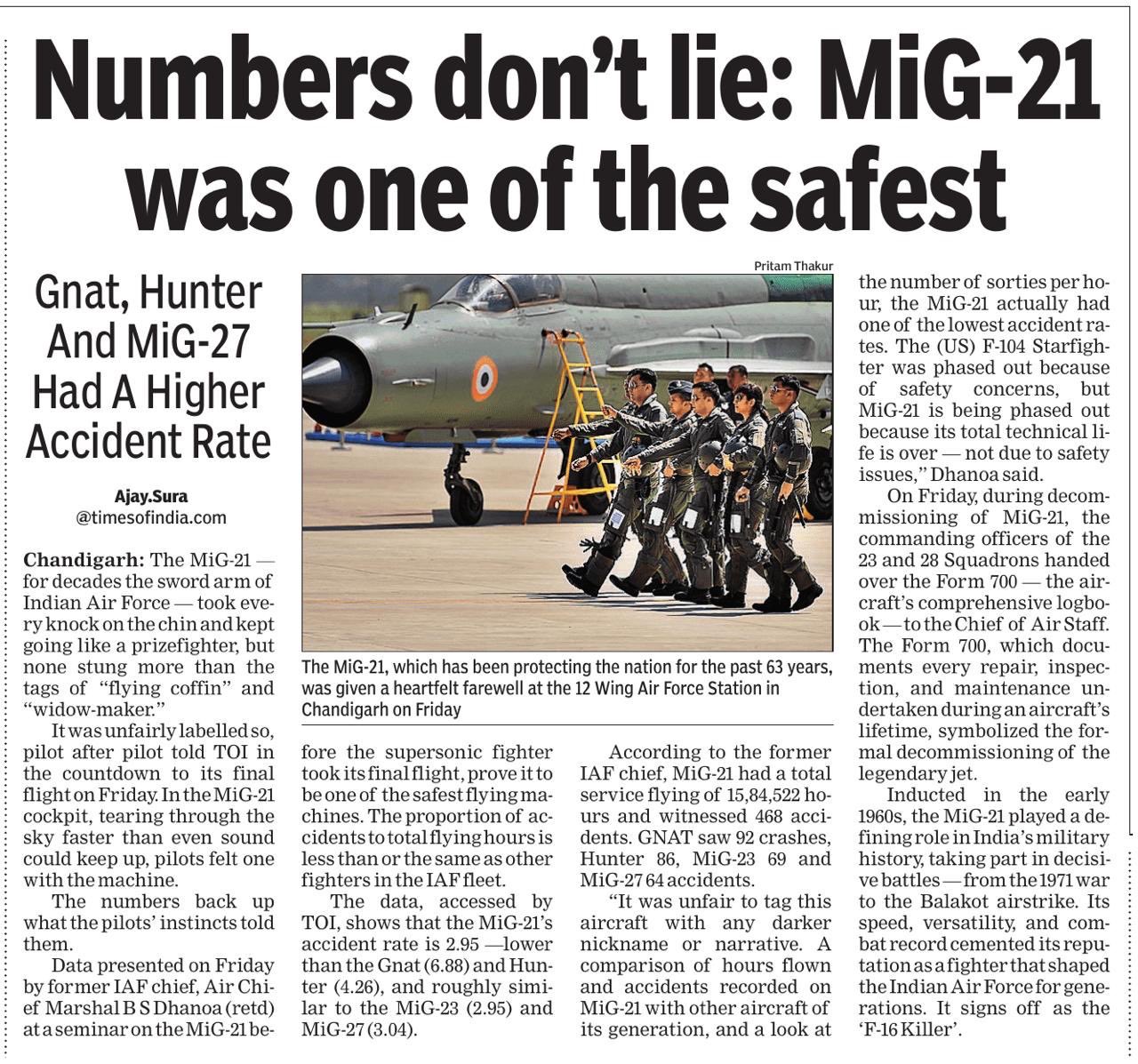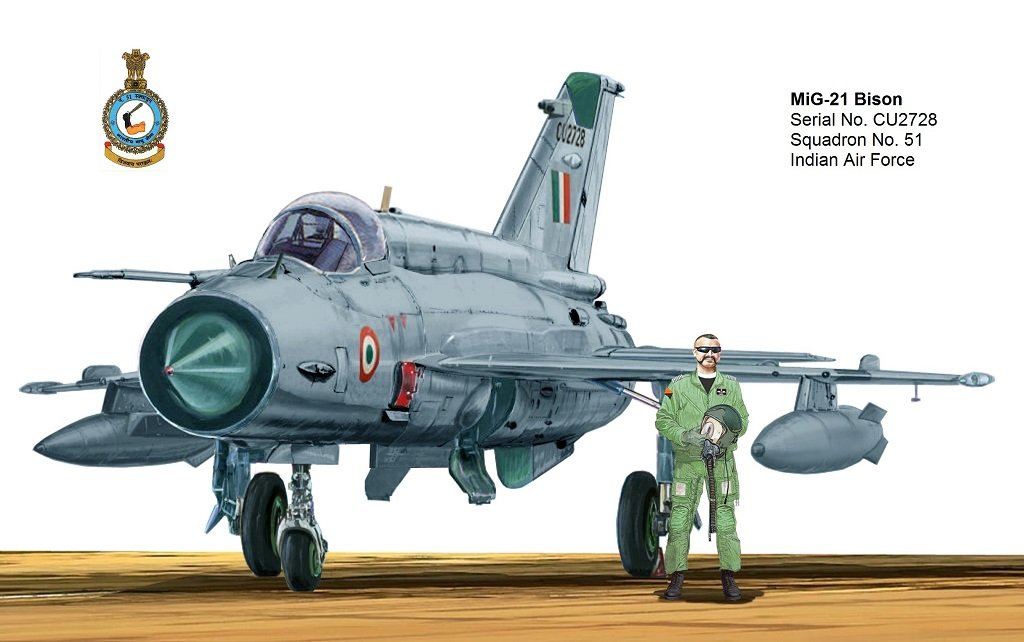Adieu MiG-21 Fishbed!
Re: Adieu MiG-21 Fishbed!
^^ From 1963 I believe.
Re: Adieu MiG-21 Fishbed!
After more than six decades, the final MiG-21 squadron will exit the IAF in Sept 2025.
From warhorse to legend: MiG-21 to bow out after 62 years in Indian skies
https://economictimes.indiatimes.com/ne ... 821727.cms
22 July 2025
https://x.com/manupubby/status/1947524060780380546 ---> After over six decades of operations, India’s MiG 21 fighter will finally fly into the sunset. Farewell ceremony planned at Chandigarh airbase in September. Last squadron to be number plated. India's fighter squadron strength will dip to 29.

From warhorse to legend: MiG-21 to bow out after 62 years in Indian skies
https://economictimes.indiatimes.com/ne ... 821727.cms
22 July 2025
https://x.com/manupubby/status/1947524060780380546 ---> After over six decades of operations, India’s MiG 21 fighter will finally fly into the sunset. Farewell ceremony planned at Chandigarh airbase in September. Last squadron to be number plated. India's fighter squadron strength will dip to 29.

Re: Adieu MiG-21 Fishbed!
For 60 years, the MiG-21 has served in the @IAF_MCC, while its phase-out journey has spanned 40 years. This summary highlights how, over four decades, 28 units of the IAF transitioned out from the MiG-21 - an incredibly arduous task to replace a mainstay.
Key insights:
1. The Indian Air Force operated 24 Fighter Squadrons and 4 Training Units equipped with the MiG-21.
2. Throughout service in these 28 establishments, the average tenure of the MiG-21 aircraft was 33 years.
3. The transition to the MiG-21 began with the 28 Squadron in 1963, and the 20 Squadron was the last (albeit briefly) in the late 1990s.
4. During the 1980s, only four Squadrons switched from the MiG-21, with two converting to the Mirage 2000 and two to the MiG-29.
5. No 4 Squadron holds the distinction of serving the longest with the MiG-21 for nearly 58 years. If No 3 Squadron continues its service until 2025, it will be the second-longest-serving unit at 53 years.
6. Five IAF Squadrons exclusively operated the M Variant of the MiG-21 for an average duration of 40 years each. These were 17, 35, 37, 101, 108.
7. The FL (Type-77) variant was preferred by training units and Type Training Squadrons.
8. The Tactics & Air Combat Development Establishment (TACDE) had the honour of operating four different variants of the MiG-21, excluding the trainer types.
Sources for these insights include Form 1500 from the Ministry of Defence History Division, Bharat Rakshak, books by Pushpinder Singh, the CAW History series, Squadron coffee table books, Press Information Bureau releases, and accounts from veterans. Graphic by @SauravChordia1. Background image by @zone5aviation. Every effort has been diligently undertaken to ensure the accuracy of this information, and any unintentional errors are sincerely regretted.
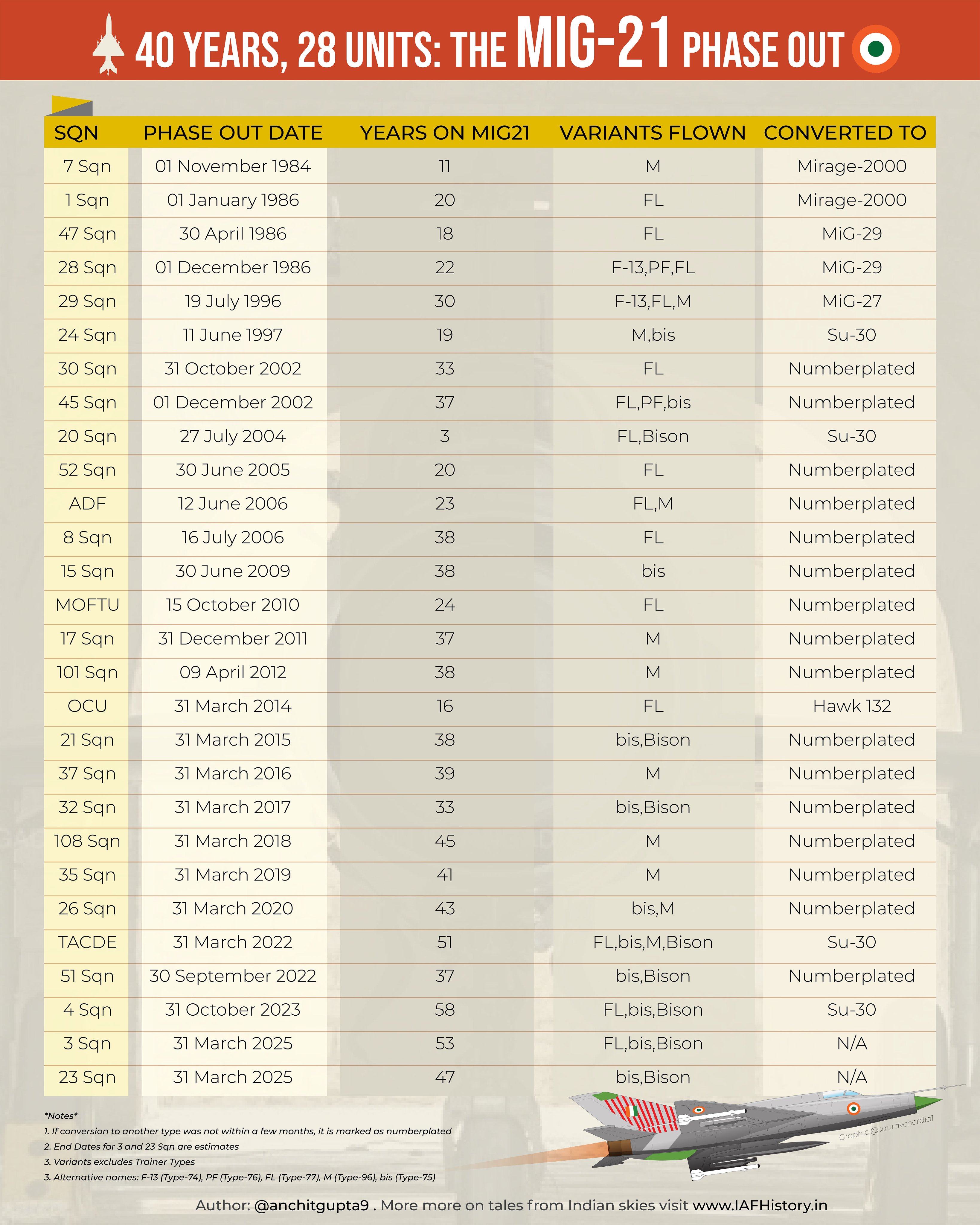
Key insights:
1. The Indian Air Force operated 24 Fighter Squadrons and 4 Training Units equipped with the MiG-21.
2. Throughout service in these 28 establishments, the average tenure of the MiG-21 aircraft was 33 years.
3. The transition to the MiG-21 began with the 28 Squadron in 1963, and the 20 Squadron was the last (albeit briefly) in the late 1990s.
4. During the 1980s, only four Squadrons switched from the MiG-21, with two converting to the Mirage 2000 and two to the MiG-29.
5. No 4 Squadron holds the distinction of serving the longest with the MiG-21 for nearly 58 years. If No 3 Squadron continues its service until 2025, it will be the second-longest-serving unit at 53 years.
6. Five IAF Squadrons exclusively operated the M Variant of the MiG-21 for an average duration of 40 years each. These were 17, 35, 37, 101, 108.
7. The FL (Type-77) variant was preferred by training units and Type Training Squadrons.
8. The Tactics & Air Combat Development Establishment (TACDE) had the honour of operating four different variants of the MiG-21, excluding the trainer types.
Sources for these insights include Form 1500 from the Ministry of Defence History Division, Bharat Rakshak, books by Pushpinder Singh, the CAW History series, Squadron coffee table books, Press Information Bureau releases, and accounts from veterans. Graphic by @SauravChordia1. Background image by @zone5aviation. Every effort has been diligently undertaken to ensure the accuracy of this information, and any unintentional errors are sincerely regretted.

Re: Adieu MiG-21 Fishbed!
VIDEO: https://x.com/ndtv/status/1947720777132093626 ---> 62 Years Later... The IAF To Retire Its MiG-21s. Air Marshal Anil Khosla (retd) shares his views.
https://x.com/VishnuNDTV/status/1947891191514644813 ---> The MiG-21 era is over. A fantastic chat with Air Marshal Anil Khosla (retd.), the former Vice Chief on his experiences on the legacy fighter - he flew 5 variants.
https://x.com/VishnuNDTV/status/1947891191514644813 ---> The MiG-21 era is over. A fantastic chat with Air Marshal Anil Khosla (retd.), the former Vice Chief on his experiences on the legacy fighter - he flew 5 variants.
Re: Adieu MiG-21 Fishbed!
https://x.com/mountain_rats/status/1948244029071577503 ---> From a known MiG pilot. The only fighter aircraft I flew close to 3,500 flights. Never wanted to change over. The F4, F5, F-104, F-16, All of them were developed with a single purpose in mind, ie, how to counter a MiG-21. USA formed one full squadron of stolen MiG-21s to train their pilots in Top Gun Combat school, just to get an idea how nimble, formidable and deadly a MiG-21 could be. This is the story narrated by MiG-21, as the IAF sends it into retirement in a few weeks from now. Love and respect to my Proud Steed!
"I Am the MiG-21 – My Final Salute
I belonged to the Mikoyan-Gurevich family, but people fondly called me the MiG-21. I was born in the erstwhile Soviet Union, but to be honest, I grew up in India. My precious youth, my maturity, my entire life — it was lived in service with the Indian Air Force. When people spoke of a steel bird that could break the sound barrier back in my day, they meant me. Even today, I say that with pride. It was the year 1963 when I landed for the first time at Ambala Air Base. I still remember the look in the eyes of the pilots who saw me — full of awe, curiosity, disbelief. After all, even then I had earned the nickname “The Bullet That Flies.” I was already counted among the finest fighter jets in the world.
I still recall how the young pilots — fresh out of flight school — would climb into my cockpit for the first time. Nervous, hesitant, and sweating just a little. And I would greet them gently, like an old warrior welcoming his apprentice. The moment my engine and afterburner began to roar, their anxiety turned into exhilaration. As I climbed into the sky, they were stunned by my raw power. With time, the senior, more experienced pilots became confident flying me. They learned to climb steep, bank hard, barrel roll, and perform aerobatics with finesse. And when we returned to the ground, their faces beamed like victors — proud and fulfilled. They were no longer boys. They were becoming India’s warriors of the sky. Before stepping down, they would run a gentle hand across my fuselage and whisper, “Thank you.” Then, off they'd go, eager to tell others what it felt like to fly with me.
I had just completed two years in India when my true test arrived —The Indo-Pakistani War of 1965. Though still new, my pilots and I rose to the task. We patrolled India’s skies like hawks. No Pakistani intruder could breach our aerial borders. I chased down and intercepted enemy aircraft at blistering speeds, and it was in this very war that my true power was first witnessed — even by me. The outcome? India ordered more of me from Russia. And then, a new dream took shape — I was to be built in India.
From Bangalore, Nashik, and Koraput in Odisha, my family began to grow at the HAL factories. Before long, we were a family of over 800 MiG-21s — strong and proud. What can I say about the 1971 war? I roared across the Western Front, shooting down Pakistan’s F-86 Sabres, bombing enemy airfields into silence. As the years rolled on, new generations of aircraft arrived —The Mirage-2000, the mighty Sukhoi-30, the Rafale, and Tejas — India’s very own dream, made real. Did I feel sidelined? Replaced? Not at all! Even with them, I flew proudly in Kargil. And after the Balakot strike, when Pakistan retaliated, it was I, with Wing Commander Abhinandan, who brought down an F-16, and became immortal once again.
I had guarded India’s skies for decades. My time was coming to an end. This was the era of the new generation. Still, when the pilots who had first learned to fly in my cockpit grew older — became Air Commodores, Air Marshals — they’d often return to see me. Their eyes would well up. And in that moment, I too felt a sense of fulfillment. Now, the time has come for me to take my final flight. I leave — not in silence, but with the thunder of duty fulfilled.” Jai Hind!
https://x.com/mountain_rats/status/1948244041822326786 ---> Yes…some called me “The Flying Coffin.” And yes — it hurt. But no one saw the tears I shed with the grieving families of those we lost. One noticed how I flew without complaint — through political neglect, operational fatigue, budget shortages and spare part crises. I never blamed anyone. I just flew — as long as I could.
I am the MiG-21.I was not perfect. I had flaws, faults, and the scars that came with them. But when India needed a supersonic sword in the sky — I was there. For six decades, I protected India’s airspace like a devoted sentinel. To every technician who kept me flying through thick and thin, I bow with deepest gratitude — I am forever in your debt.” Jai Hind!
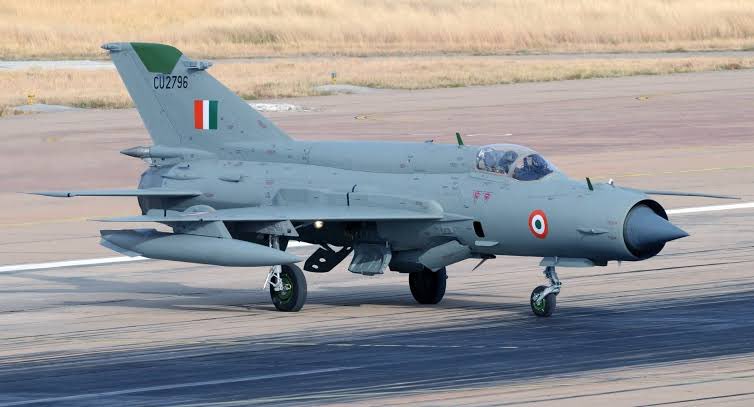
"I Am the MiG-21 – My Final Salute
I belonged to the Mikoyan-Gurevich family, but people fondly called me the MiG-21. I was born in the erstwhile Soviet Union, but to be honest, I grew up in India. My precious youth, my maturity, my entire life — it was lived in service with the Indian Air Force. When people spoke of a steel bird that could break the sound barrier back in my day, they meant me. Even today, I say that with pride. It was the year 1963 when I landed for the first time at Ambala Air Base. I still remember the look in the eyes of the pilots who saw me — full of awe, curiosity, disbelief. After all, even then I had earned the nickname “The Bullet That Flies.” I was already counted among the finest fighter jets in the world.
I still recall how the young pilots — fresh out of flight school — would climb into my cockpit for the first time. Nervous, hesitant, and sweating just a little. And I would greet them gently, like an old warrior welcoming his apprentice. The moment my engine and afterburner began to roar, their anxiety turned into exhilaration. As I climbed into the sky, they were stunned by my raw power. With time, the senior, more experienced pilots became confident flying me. They learned to climb steep, bank hard, barrel roll, and perform aerobatics with finesse. And when we returned to the ground, their faces beamed like victors — proud and fulfilled. They were no longer boys. They were becoming India’s warriors of the sky. Before stepping down, they would run a gentle hand across my fuselage and whisper, “Thank you.” Then, off they'd go, eager to tell others what it felt like to fly with me.
I had just completed two years in India when my true test arrived —The Indo-Pakistani War of 1965. Though still new, my pilots and I rose to the task. We patrolled India’s skies like hawks. No Pakistani intruder could breach our aerial borders. I chased down and intercepted enemy aircraft at blistering speeds, and it was in this very war that my true power was first witnessed — even by me. The outcome? India ordered more of me from Russia. And then, a new dream took shape — I was to be built in India.
From Bangalore, Nashik, and Koraput in Odisha, my family began to grow at the HAL factories. Before long, we were a family of over 800 MiG-21s — strong and proud. What can I say about the 1971 war? I roared across the Western Front, shooting down Pakistan’s F-86 Sabres, bombing enemy airfields into silence. As the years rolled on, new generations of aircraft arrived —The Mirage-2000, the mighty Sukhoi-30, the Rafale, and Tejas — India’s very own dream, made real. Did I feel sidelined? Replaced? Not at all! Even with them, I flew proudly in Kargil. And after the Balakot strike, when Pakistan retaliated, it was I, with Wing Commander Abhinandan, who brought down an F-16, and became immortal once again.
I had guarded India’s skies for decades. My time was coming to an end. This was the era of the new generation. Still, when the pilots who had first learned to fly in my cockpit grew older — became Air Commodores, Air Marshals — they’d often return to see me. Their eyes would well up. And in that moment, I too felt a sense of fulfillment. Now, the time has come for me to take my final flight. I leave — not in silence, but with the thunder of duty fulfilled.” Jai Hind!
https://x.com/mountain_rats/status/1948244041822326786 ---> Yes…some called me “The Flying Coffin.” And yes — it hurt. But no one saw the tears I shed with the grieving families of those we lost. One noticed how I flew without complaint — through political neglect, operational fatigue, budget shortages and spare part crises. I never blamed anyone. I just flew — as long as I could.
I am the MiG-21.I was not perfect. I had flaws, faults, and the scars that came with them. But when India needed a supersonic sword in the sky — I was there. For six decades, I protected India’s airspace like a devoted sentinel. To every technician who kept me flying through thick and thin, I bow with deepest gratitude — I am forever in your debt.” Jai Hind!

Re: Adieu MiG-21 Fishbed!
https://x.com/AnchitGupta9/status/1950524856887632110 ---> The first 14 officers of the IAF's MiG-21 era. No 28 Sqn, Chandigarh. March 1963. 7 Pilots. 5 Engineers. 1 Doctor. 1 Photo Interpreter. Pioneers of India’s supersonic leap. Some legends from this list:
• Dilbagh Singh & SK Mehra — went on to become Chiefs of Air Staff.
• MSD Wollen & BD Jayal — rose to Air Marshal rank. Wollen became HAL MD; Jayal retired as AOC-in-C SWAC.
• KC Kapoor headed Systems Branch, Air HQ.
• AK Sen became CI at DSSC. Both retired as AVMs.
• DK Khashnobish led a BRD as Air Cmde.
• AK Mukherjee became TACDE’s first CO.
• HS Gill laid down his life in 1971 while attacking Badin Radar as CO of 47 Sqn.
• MK Ranganathan trained in aerial photo-recce—helped modify aircraft for critical photo roles.
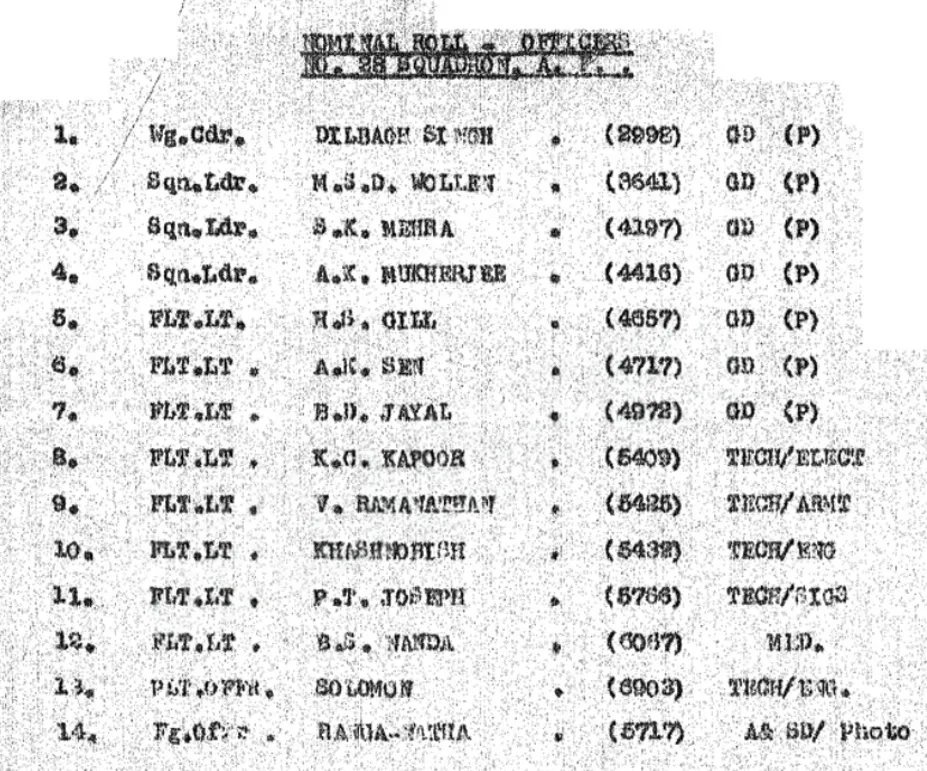
• Dilbagh Singh & SK Mehra — went on to become Chiefs of Air Staff.
• MSD Wollen & BD Jayal — rose to Air Marshal rank. Wollen became HAL MD; Jayal retired as AOC-in-C SWAC.
• KC Kapoor headed Systems Branch, Air HQ.
• AK Sen became CI at DSSC. Both retired as AVMs.
• DK Khashnobish led a BRD as Air Cmde.
• AK Mukherjee became TACDE’s first CO.
• HS Gill laid down his life in 1971 while attacking Badin Radar as CO of 47 Sqn.
• MK Ranganathan trained in aerial photo-recce—helped modify aircraft for critical photo roles.

Re: Adieu MiG-21 Fishbed!
^^^
https://x.com/VarlinPanwar/status/1950556116724666702 ---> A memorial stands in their honour in the Squadron complex.
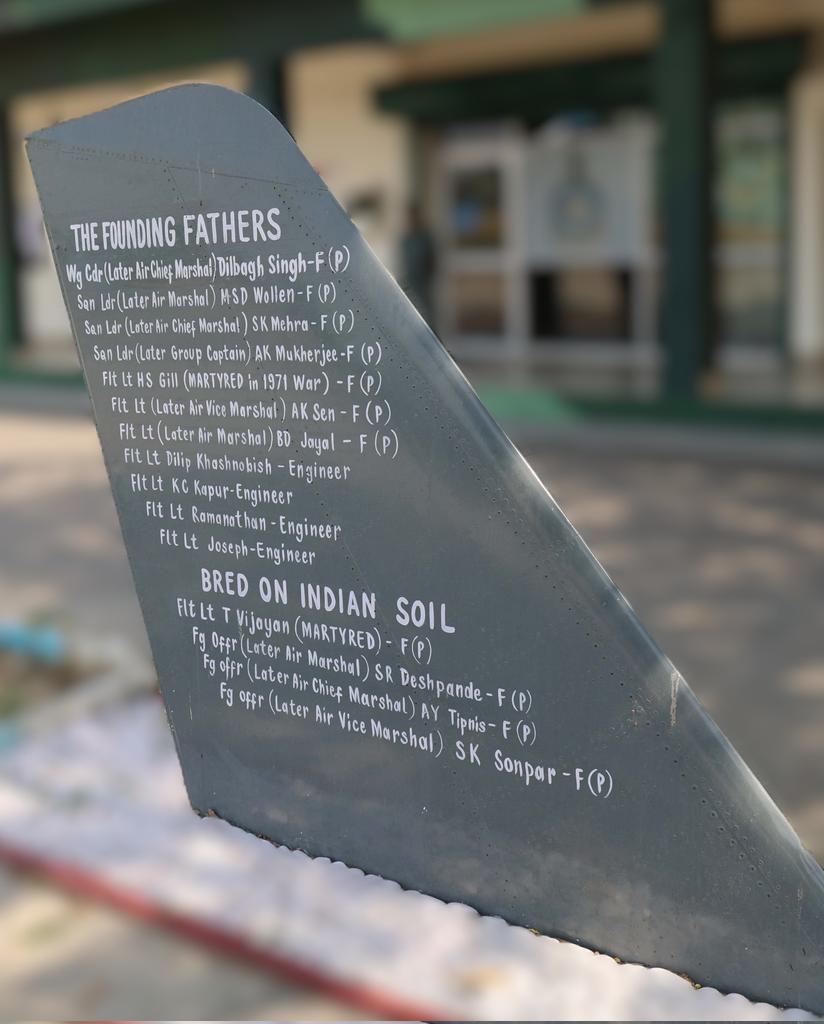
https://x.com/VarlinPanwar/status/1950556116724666702 ---> A memorial stands in their honour in the Squadron complex.

Re: Adieu MiG-21 Fishbed!
India's MiG-21 Legacy: Pakistan Buster Or 'Flying Coffin?'
In Episode 13 of Control-Alt-Defence, India’s leading podcast on military, aerospace and defence, hosts Shiv Aroor and Vishnu Som turn their attention to the MiG-21 fighter aircraft, an icon of Indian military aviation now set for retirement. Joining them is aviation historian Anchit Gupta, whose deep research and writing on the Indian Air Force bring valuable insight into the aircraft’s six-decade-long service. The episode explores the MiG-21’s complex legacy, its role in shaping India’s aerial combat capabilities since 1963, its emotional and cultural resonance, and the persistent controversies around its safety record. With the last of the jets scheduled to retire by September 2025, the conversation separates fact from myth, addressing why the aircraft earned the grim nickname "flying coffin" and what truly lay behind its troubled reputation. Far from a technical overview, this is a nuanced and historically grounded discussion about an aircraft that has been both revered and criticised, an emblem of India’s past and a reflection of its long journey toward modernisation. For those seeking clarity over sentiment, this episode is essential listening.
In Episode 13 of Control-Alt-Defence, India’s leading podcast on military, aerospace and defence, hosts Shiv Aroor and Vishnu Som turn their attention to the MiG-21 fighter aircraft, an icon of Indian military aviation now set for retirement. Joining them is aviation historian Anchit Gupta, whose deep research and writing on the Indian Air Force bring valuable insight into the aircraft’s six-decade-long service. The episode explores the MiG-21’s complex legacy, its role in shaping India’s aerial combat capabilities since 1963, its emotional and cultural resonance, and the persistent controversies around its safety record. With the last of the jets scheduled to retire by September 2025, the conversation separates fact from myth, addressing why the aircraft earned the grim nickname "flying coffin" and what truly lay behind its troubled reputation. Far from a technical overview, this is a nuanced and historically grounded discussion about an aircraft that has been both revered and criticised, an emblem of India’s past and a reflection of its long journey toward modernisation. For those seeking clarity over sentiment, this episode is essential listening.
Re: Adieu MiG-21 Fishbed!
MiG-21 Mavericks: An Air Chief's High-Flying Tales
In Episode 16 of Control Alt Defence, India’s leading podcast on military, aerospace and defence, hosts Shiv Aroor and Vishnu Som turn their attention to the MiG-21 fighter aircraft, an icon of Indian military aviation now set for retirement. Joining them is former Chief of Air Staff Birender Singh Dhanoa, who brings valuable insights and in-depth analysis on the fighter jet.
In Episode 16 of Control Alt Defence, India’s leading podcast on military, aerospace and defence, hosts Shiv Aroor and Vishnu Som turn their attention to the MiG-21 fighter aircraft, an icon of Indian military aviation now set for retirement. Joining them is former Chief of Air Staff Birender Singh Dhanoa, who brings valuable insights and in-depth analysis on the fighter jet.
Re: Adieu MiG-21 Fishbed!
Twitter thread on how serial numbers are assigned in the IAF. A great read.
https://x.com/AnchitGupta9/status/1955652195539681450 ---> That tiny code on a MiG-21’s tail isn’t paint—it’s a passport. Read it and you’ll know variant, era, even HAL vs import. Here’s the Rosetta Stone to 75+ years of @IAF_MCC serials (Tail numbers). (1/17)
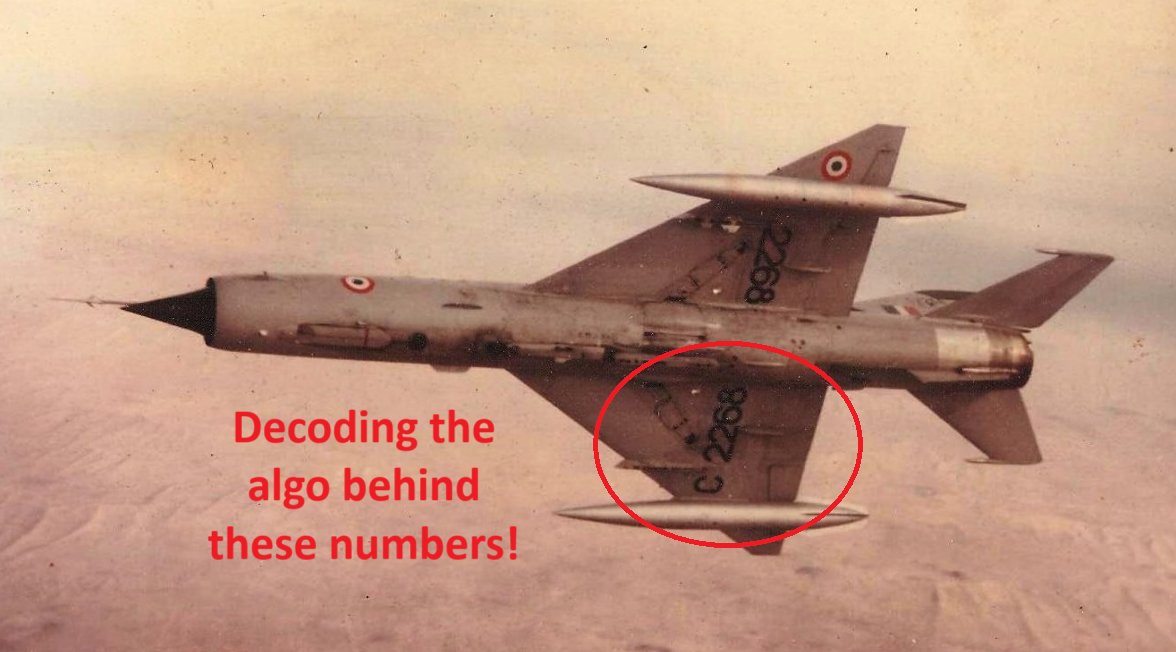
https://x.com/AnchitGupta9/status/1955652195539681450 ---> That tiny code on a MiG-21’s tail isn’t paint—it’s a passport. Read it and you’ll know variant, era, even HAL vs import. Here’s the Rosetta Stone to 75+ years of @IAF_MCC serials (Tail numbers). (1/17)

Re: Adieu MiG-21 Fishbed!
https://x.com/IAF_MCC/status/1959956301825581119 ---> Honouring the enduring legacy of MiG-21, the Chief of the Air Staff visited No 23 Squadron "Panthers", the last squadron operating the legendary fighter. The CAS flew a fighter sortie, and also in a formation led by Squadron Leader Priya Sharma, symbolising both tradition and transformation. On 26 September 2025, the MiG-21 retires after six decades of glorious service in the IAF.
https://x.com/VarlinPanwar/status/1959979172455199220 ---> The symbolism of having Squadron Leader Priya Sharma as the formation leader has an added effect. Great picture.

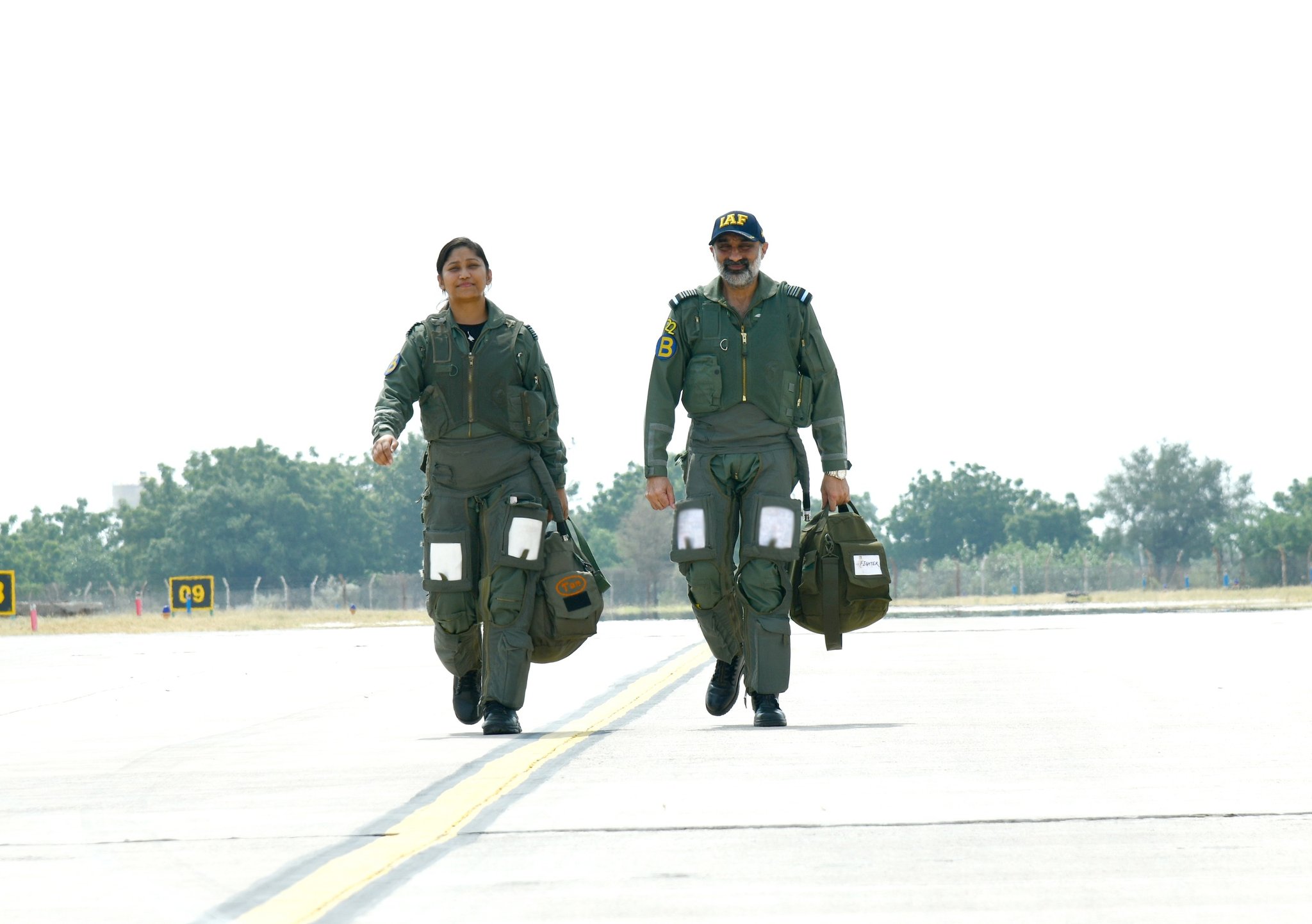
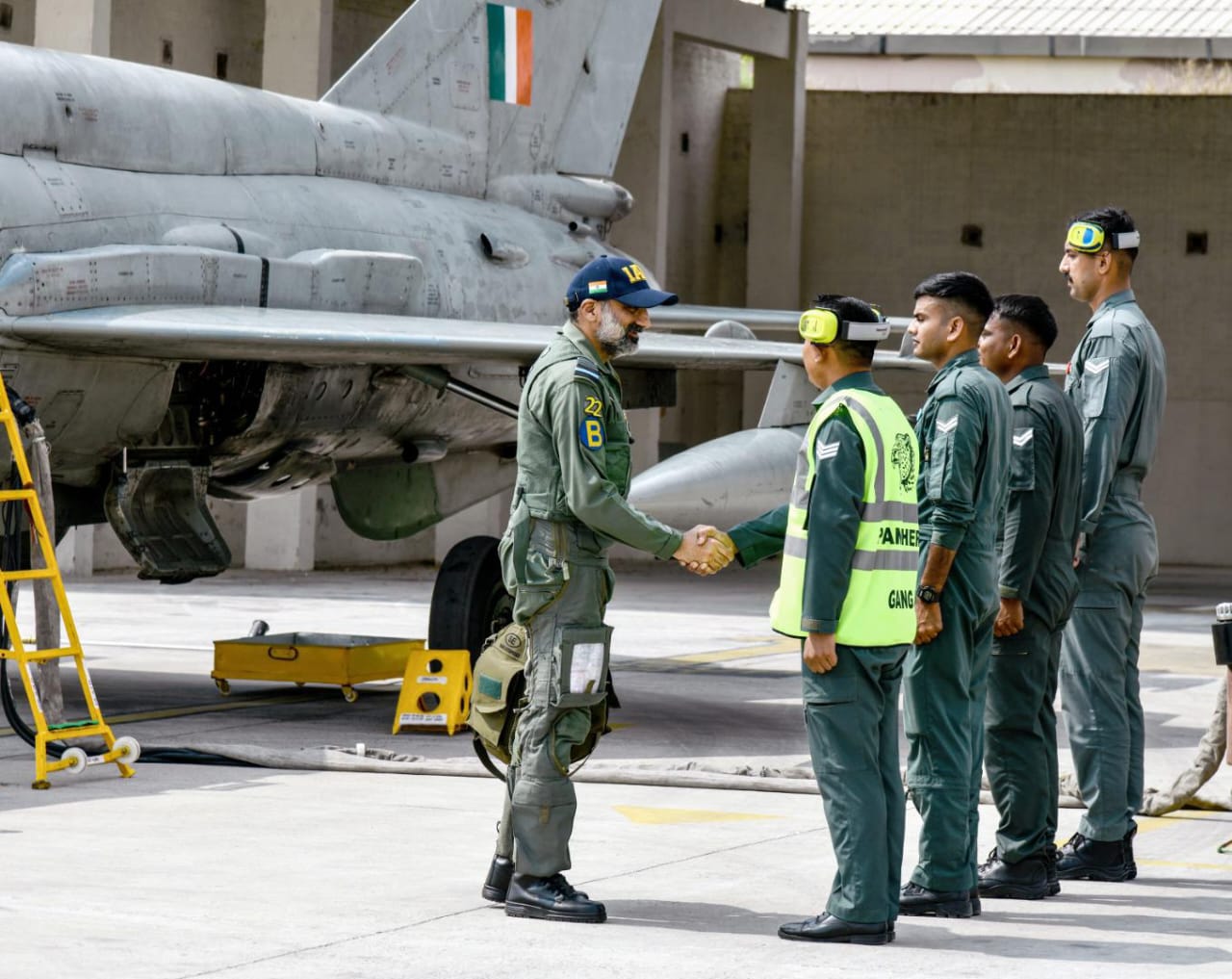
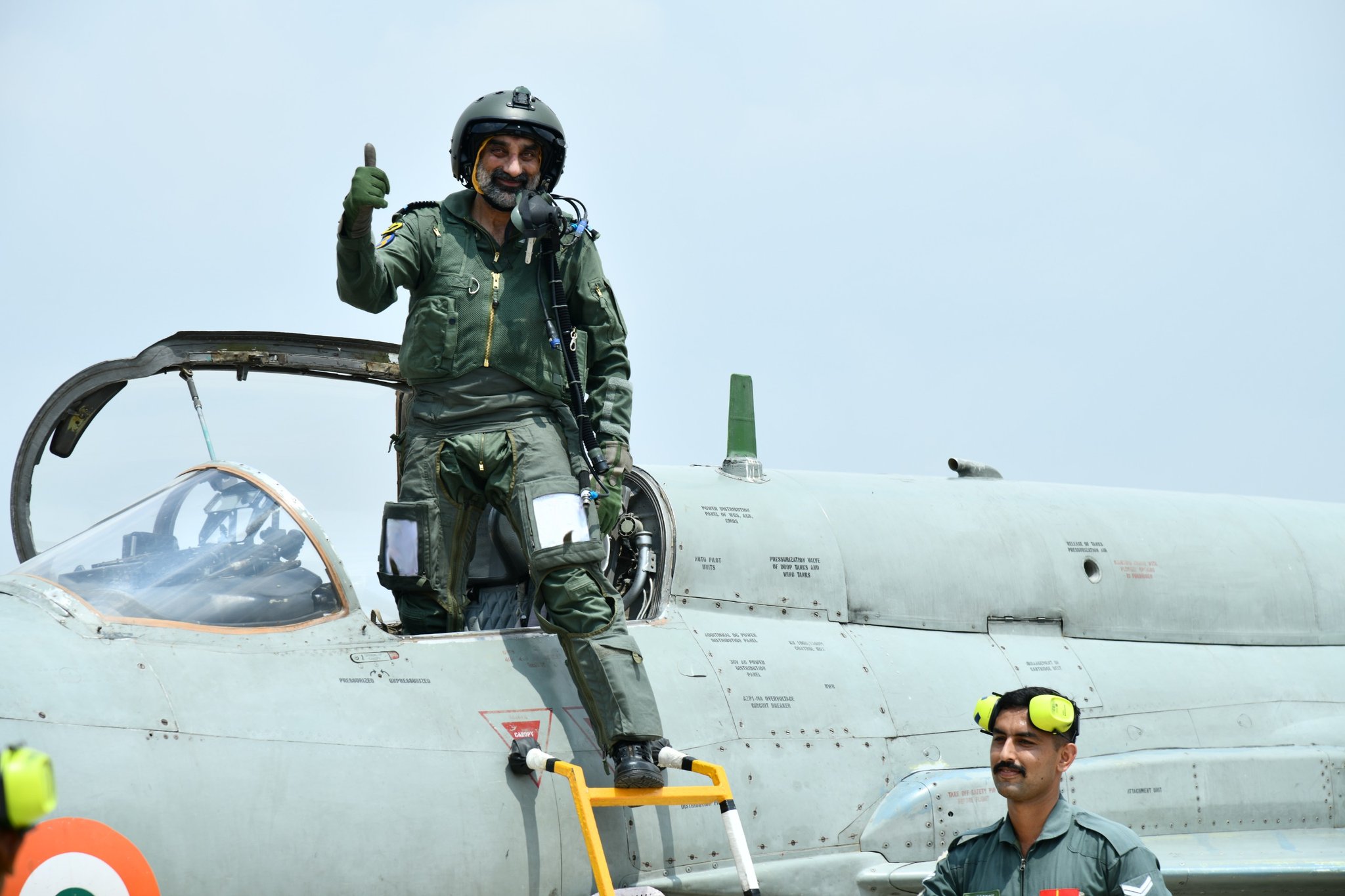
https://x.com/VarlinPanwar/status/1959979172455199220 ---> The symbolism of having Squadron Leader Priya Sharma as the formation leader has an added effect. Great picture.




Re: Adieu MiG-21 Fishbed!
VIDEO: https://x.com/ANI/status/1959944983353455087 ---> Nal Air Base, Bikaner, Rajasthan: Ahead of the official retirement of the MiG-21 fighter planes, Chief of the Air Staff, Air Chief Marshal AP Singh and pilots take a few sorties in the aircraft.
https://x.com/VarlinPanwar/status/1959954397733261428 ---> I am sure people must have noticed that due to not being in active flying, most of the senior officers fly in a trainer along with a relatively senior pilot who is current on the aircraftand undertaking active flying duties. Whereas ACM AP Singh chooses to fly in a single-seater MiG-21 Bison here. Not only does it take immense knowledge, but also courage, especially when the aircraft is so close to its retirement. A very motivational flight indeed. Salute to you, Sir. Jai Hind.
https://x.com/zone5aviation/status/1959962830133662059 ---> The aircraft that the Chief is flying is CU2777, which happens to be the first MiG-21bis upgraded to Bison configuration, making this the oldest Bison in the fleet!
https://x.com/AnchitGupta9/status/1959996254248689875 ---> That’s a sharp catch. To add more context to that telling stat - This aircraft, originally C2777 Mig-21bis was fully locally manufactured by HAL in 1985 – making it a 40 year old airframe!
https://x.com/VarlinPanwar/status/1959954397733261428 ---> I am sure people must have noticed that due to not being in active flying, most of the senior officers fly in a trainer along with a relatively senior pilot who is current on the aircraftand undertaking active flying duties. Whereas ACM AP Singh chooses to fly in a single-seater MiG-21 Bison here. Not only does it take immense knowledge, but also courage, especially when the aircraft is so close to its retirement. A very motivational flight indeed. Salute to you, Sir. Jai Hind.
https://x.com/zone5aviation/status/1959962830133662059 ---> The aircraft that the Chief is flying is CU2777, which happens to be the first MiG-21bis upgraded to Bison configuration, making this the oldest Bison in the fleet!
https://x.com/AnchitGupta9/status/1959996254248689875 ---> That’s a sharp catch. To add more context to that telling stat - This aircraft, originally C2777 Mig-21bis was fully locally manufactured by HAL in 1985 – making it a 40 year old airframe!
Re: Adieu MiG-21 Fishbed!
VIDEO: https://x.com/ANI/status/1959948074551267755 ---> Chief of the Air Staff, Air Chief Marshal AP Singh says, "MiG-21 has been the workhorse of the Indian Air Force. We've inducted it in 1960s and is still continuing with it. This has been one of the most mass-produced supersonic fighter jets. About 11,000 or so were produced and more than 60 countries have operated it. It's a design which is very limited in numbers, delta with the tail plane. My first experience was in 1985, I went to Tezpur and we flew the Type 77, one of the MiG-21s. After flying the Kirans, it was a revelation that the aircraft could feel like this. It's an amazing aircraft to fly. Very agile, very manoeuvrable and very simple design. It requires some kind of initial training for you to get used to it. At max reheat, it could climb more than 200-250 meters per second. I think it is going to be one aircraft that is going to be missed by people who have flown it earlier. Now we have to move on because this technology is old. It's very difficult to maintain this technology now. So we've decided to call it a day for this aircraft and move on to the new platforms like Tejas, Tejas Mk2, Rafales, Su-30s are already operating. So these platforms will take this place..."
VIDEO: https://x.com/ANI/status/1959957491975897596 ---> Nal Air Base, Bikaner, Rajasthan: Air Force Spokesperson Jaideep Singh says, "MiG-21 has a history of shooting down all generations of aircraft. And the last one was the F-16, which was shot down. It had also shot down, in the 1971 war, the F-104s. The way Indian Air Force has utilised the MiG-21 operationally, none of the air forces in the world have, utilised this... I have a personal connect with this aircraft. I've flown this aircraft. We are going to miss them. Almost every pilot in the Indian Air Force who've come up not recently, but prior, has flown the MiG-21 and then they've moved on to other aircraft."
VIDEO: https://x.com/ANI/status/1959957491975897596 ---> Nal Air Base, Bikaner, Rajasthan: Air Force Spokesperson Jaideep Singh says, "MiG-21 has a history of shooting down all generations of aircraft. And the last one was the F-16, which was shot down. It had also shot down, in the 1971 war, the F-104s. The way Indian Air Force has utilised the MiG-21 operationally, none of the air forces in the world have, utilised this... I have a personal connect with this aircraft. I've flown this aircraft. We are going to miss them. Almost every pilot in the Indian Air Force who've come up not recently, but prior, has flown the MiG-21 and then they've moved on to other aircraft."
Re: Adieu MiG-21 Fishbed!
https://x.com/zone5aviation/status/1959960274943041724 ---> The send offs have begun! Interestingly, this makes two chiefs that have flown Bison sorties with the Panthers. ACM Bhadauria flew the final fighter sortie of his career with the squadron in September 2021. Now ACM AP Singh flies as the Panthers/MiG-21s bow out.
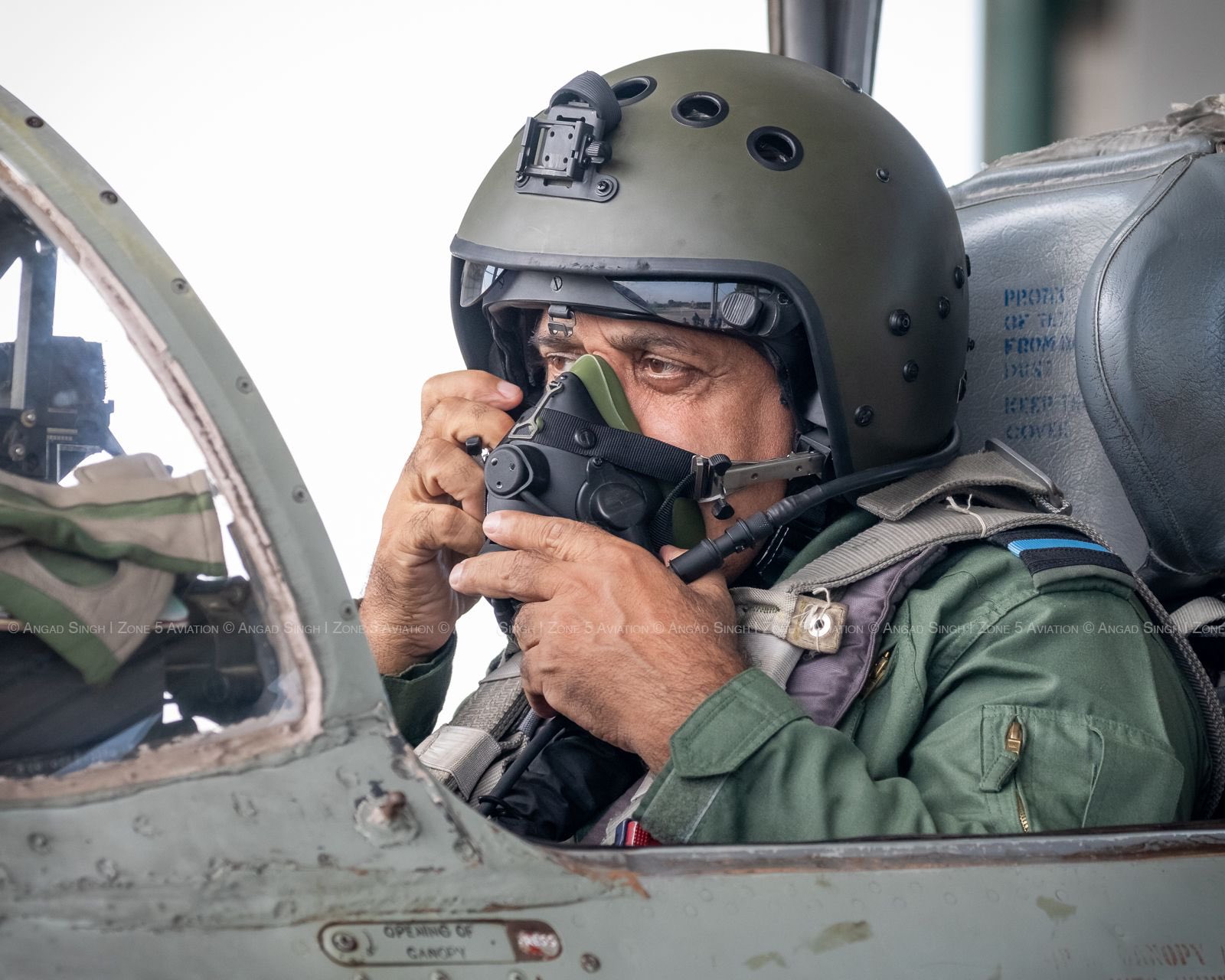

Re: Adieu MiG-21 Fishbed!
VIDEO: https://x.com/PTI_News/status/1959970343965364406 ---> Chief of Air Staff, Air Chief Marshal Amar Preet Singh takes a sortie in MiG-21 aircraft in Bikaner. The IAF is all set to bid adieu MiG-21 aircraft from operation roles on September 26th.
Re: Adieu MiG-21 Fishbed!
IAF Chief AP Singh Flies Final Sorties In Mig-21 As Fighter Jet Nears Retirement
"Tejas was designed as a MiG-21 replacement..." Air Chief AP Singh On MiG-21 retirement
The MiG-21 fighter jets, known as the trusted workhorses of the Indian Air Force for decades, are finally preparing for their sunset flights. At Nal Air Base in Bikaner, Chief of the Air Staff, Air Chief Marshal AP Singh, along with experienced pilots, took to the skies in these legendary aircraft to mark a symbolic moment in India’s aviation history. As one era draws to a close, another begins with the indigenous HAL Tejas stepping into the spotlight. Designed as a direct replacement for the MiG-21, Tejas carries forward the legacy while offering advanced features, modern avionics, and a delta-wing design inspired by the Mirage. Air Chief Marshal Singh outlined how Tejas has evolved from concept to reality, with contracts already in place for 83 jets and more deals lined up. He emphasized the importance of Tejas not only as a multirole combat aircraft but also as a versatile platform that will train future fighter pilots. With upcoming variants such as Tejas MK2 and the next-generation AMCA project, India is transitioning towards enhanced self-reliance in defense technology. The final flights of the MiG-21 are not just farewells to the past but a salute to the future, as the Indian Air Force strengthens its aerial dominance with homegrown power. Stay tuned as we dive deep into this historic transition, explore what makes Tejas the game-changer, and discuss whether it can truly surpass the legendary legacy of the MiG-21. Will this shift transform India’s air power forever? Watch till the end to find out.
"Tejas was designed as a MiG-21 replacement..." Air Chief AP Singh On MiG-21 retirement
The MiG-21 fighter jets, known as the trusted workhorses of the Indian Air Force for decades, are finally preparing for their sunset flights. At Nal Air Base in Bikaner, Chief of the Air Staff, Air Chief Marshal AP Singh, along with experienced pilots, took to the skies in these legendary aircraft to mark a symbolic moment in India’s aviation history. As one era draws to a close, another begins with the indigenous HAL Tejas stepping into the spotlight. Designed as a direct replacement for the MiG-21, Tejas carries forward the legacy while offering advanced features, modern avionics, and a delta-wing design inspired by the Mirage. Air Chief Marshal Singh outlined how Tejas has evolved from concept to reality, with contracts already in place for 83 jets and more deals lined up. He emphasized the importance of Tejas not only as a multirole combat aircraft but also as a versatile platform that will train future fighter pilots. With upcoming variants such as Tejas MK2 and the next-generation AMCA project, India is transitioning towards enhanced self-reliance in defense technology. The final flights of the MiG-21 are not just farewells to the past but a salute to the future, as the Indian Air Force strengthens its aerial dominance with homegrown power. Stay tuned as we dive deep into this historic transition, explore what makes Tejas the game-changer, and discuss whether it can truly surpass the legendary legacy of the MiG-21. Will this shift transform India’s air power forever? Watch till the end to find out.
Re: Adieu MiG-21 Fishbed!
While bidding a farewell to the MiG-21, most of the posts are about IAF and the pilots flying these machines. Let us also take a moment to be thankful to all those involved in making those aircrafts in India and ensuring their airworthiness. For those of you who were MIG pilots in the mid 70s (emergency period), you may recall that the entire MIG fleet was grounded for quality issues. It took a few bravehearts to buck the system to do what was right; despite grave personal consequences. I think Jagjivan Ram was the defense minister at that time and matters were swept under the carpet in true Congress fashion.
Re: Adieu MiG-21 Fishbed!
https://x.com/SonicLancer/status/1965340668899008849 --->  AIR POWER
AIR POWER  ! MiG-21 Bison leads all the fighters of the IAF as it nears the final day of its 63 year long service. L- R: Su 30, Jaguar, Tejas, Bison, Mirage, Rafale and MiG-29. One last Hurrah!!
! MiG-21 Bison leads all the fighters of the IAF as it nears the final day of its 63 year long service. L- R: Su 30, Jaguar, Tejas, Bison, Mirage, Rafale and MiG-29. One last Hurrah!!
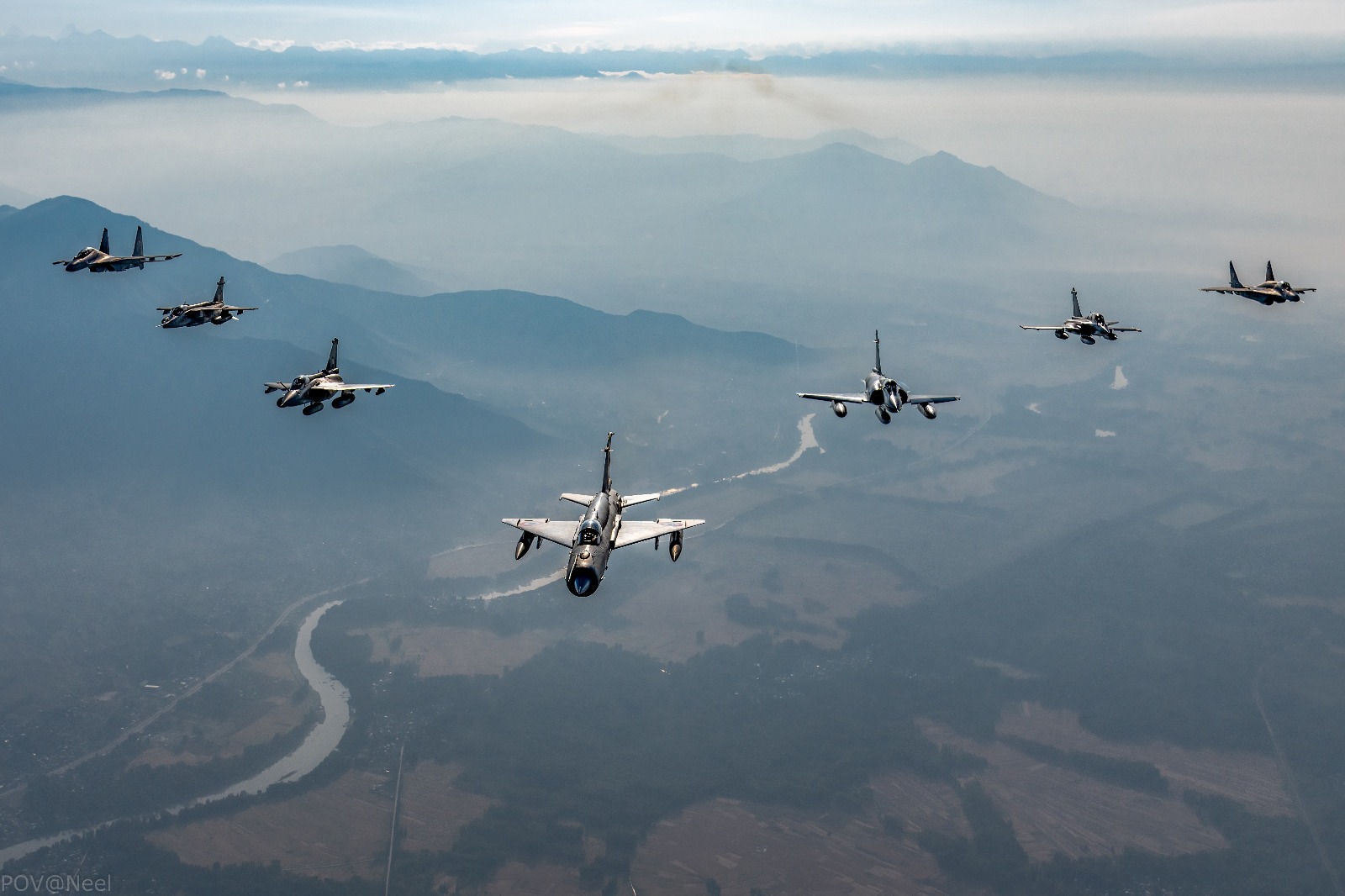

Re: Adieu MiG-21 Fishbed!
Absolutely the fighter jet that ignited the fire of attraction of Air Force for me.
It was this aircraft the gnat and hunter that was the heroes of our old wars for me.
Rest up old 21. You have done well.
It was this aircraft the gnat and hunter that was the heroes of our old wars for me.
Rest up old 21. You have done well.
Re: Adieu MiG-21 Fishbed!
MiG 21 - The Final Flight
Re: Adieu MiG-21 Fishbed!
RARE Indian Air Force Mi-26 Lift a Crashed Mig-21 fighter
Indian Air Force MI-26 heavy lift helicopter recover a downed MIG-21 fighter aircraft from fields, MI-26 is the largest helicopter used by the Indian Air Force, it's a Russian origin helicopter.
https://x.com/AnchitGupta9/status/1967139247774949876 ---> This photograph, an @IAF_MCC Mi-26 ferrying a MiG-21 Bison like a dangling dart, was no stunt. It sits in the middle of a story that began with an ejection, paused with a soft field landing, and ended with a fix that made an fleet safer. The backdrop: in 2002 the upgraded Bison entered frontline service with No. 3 Squadron, the Cobras. On 25 January, the CO, Wg Cdr Dhir, flew the first series-production UPG — aircraft CU 2782 — formally ushering the type into squadron colours. On 9 September that year, during a routine Ambala sortie, a Bison suffered an engine flame-out. Sqn Ldr Rajat Nangia ejected safely near Naggal. The first accident of the Bison fleet. With the autopilot still engaged, the aircraft flew on by itself and settled gear-up in Punjab’s slushy paddy fields, leaving the fuselage largely intact. Its digital and video recorders kept running and later anchored the Court of Inquiry. 126 HF, the “Featherweights”, were called in. They slung the intact airframe under a Mi-26; CO Wg Cdr Gulshan Walia led the Ops to HAL Ojhar (Nashik) for a careful strip-down. For perspective, IAF Mi-26s have performed underslung recoveries on roughly fourteen aircraft. HAL’s ex MD of the MiG complex, KP Puri recalls the finding: silicon contamination in fuel jammed a rotary slide valve in the R-25 fuel pump, starving the engine. The remedy was swift was introduction of 10-micron filters at all IAF bases.
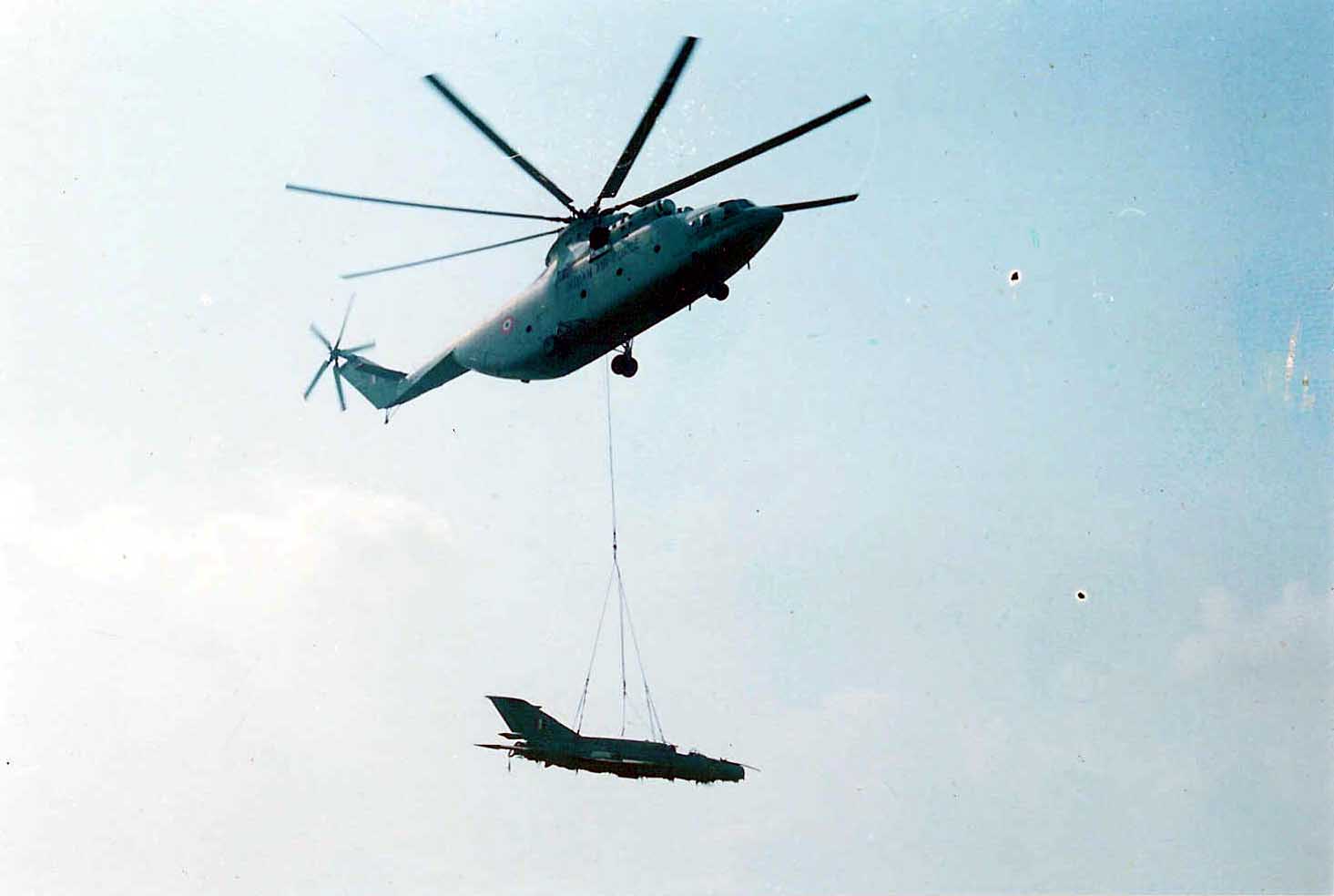
Indian Air Force MI-26 heavy lift helicopter recover a downed MIG-21 fighter aircraft from fields, MI-26 is the largest helicopter used by the Indian Air Force, it's a Russian origin helicopter.
https://x.com/AnchitGupta9/status/1967139247774949876 ---> This photograph, an @IAF_MCC Mi-26 ferrying a MiG-21 Bison like a dangling dart, was no stunt. It sits in the middle of a story that began with an ejection, paused with a soft field landing, and ended with a fix that made an fleet safer. The backdrop: in 2002 the upgraded Bison entered frontline service with No. 3 Squadron, the Cobras. On 25 January, the CO, Wg Cdr Dhir, flew the first series-production UPG — aircraft CU 2782 — formally ushering the type into squadron colours. On 9 September that year, during a routine Ambala sortie, a Bison suffered an engine flame-out. Sqn Ldr Rajat Nangia ejected safely near Naggal. The first accident of the Bison fleet. With the autopilot still engaged, the aircraft flew on by itself and settled gear-up in Punjab’s slushy paddy fields, leaving the fuselage largely intact. Its digital and video recorders kept running and later anchored the Court of Inquiry. 126 HF, the “Featherweights”, were called in. They slung the intact airframe under a Mi-26; CO Wg Cdr Gulshan Walia led the Ops to HAL Ojhar (Nashik) for a careful strip-down. For perspective, IAF Mi-26s have performed underslung recoveries on roughly fourteen aircraft. HAL’s ex MD of the MiG complex, KP Puri recalls the finding: silicon contamination in fuel jammed a rotary slide valve in the R-25 fuel pump, starving the engine. The remedy was swift was introduction of 10-micron filters at all IAF bases.

Re: Adieu MiG-21 Fishbed!
The MiG-21’s Last Flight: What Comes After India’s Iconic Fighter Bows Out
https://bharatshakti.in/curtain-raiser- ... e_vignette
18 Sept 2025
https://bharatshakti.in/curtain-raiser- ... e_vignette
18 Sept 2025
Re: Adieu MiG-21 Fishbed!
TRIBUTE TO MiG-21 - A PODCAST BY IAF
For the Indian Air Force, the MiG-21 is not just an aircraft — it's a revered legend. A symbol of courage, resilience, and professionalism. For over 60 years, it has served the IAF with unmatched distinction, carving its place in the annals of Indian military history. In this podcast, we remember, cherish, and celebrate the incredible legacy of the MiG-21 — its triumphs, its tales, and the time we shared together."
For the Indian Air Force, the MiG-21 is not just an aircraft — it's a revered legend. A symbol of courage, resilience, and professionalism. For over 60 years, it has served the IAF with unmatched distinction, carving its place in the annals of Indian military history. In this podcast, we remember, cherish, and celebrate the incredible legacy of the MiG-21 — its triumphs, its tales, and the time we shared together."
Re: Adieu MiG-21 Fishbed!
BM Simply Put: Supersonic sunset: Farewell MiG-21
https://bangaloremirror.indiatimes.com/ ... 202711.cms
29 Sept 2025
https://bangaloremirror.indiatimes.com/ ... 202711.cms
29 Sept 2025
Re: Adieu MiG-21 Fishbed!
How many of you can recall the 1982 flypast for Republic day parade had about 20 odd MIG21s flying in formation spelling out 'I A F'? That was probably one of the most distinct flypasts I had witnessed.
Re: Adieu MiG-21 Fishbed!
Too small at that time sir to remember that but I remember going to Bathinda air base around that time and seeing the MiG21 at an airshow as well as other aircraft.
Just fell in the love with the sharp cone of that a/c.
Just fell in the love with the sharp cone of that a/c.
Re: Adieu MiG-21 Fishbed!
ACM RKS Bhadauria On The IAF’s Tryst With The MiG-21
Air Chief Marshal RKS Bhadauria (Retd) has had an impressive flying record. The former IAF chief has flown 43 different aircraft and has 4,300 flying hours under his belt. ACM Bhadauria first flew the MiG-21 with the 23 Squadron, the same unit which was recently in the news as the last operational unit to have flown the aircraft. With his extensive experience flying different types of aeroplanes, Air Chief Marshal Bhadauria explains why the MiG-21 is a special aircraft both for the air force and him.
Air Chief Marshal RKS Bhadauria (Retd) has had an impressive flying record. The former IAF chief has flown 43 different aircraft and has 4,300 flying hours under his belt. ACM Bhadauria first flew the MiG-21 with the 23 Squadron, the same unit which was recently in the news as the last operational unit to have flown the aircraft. With his extensive experience flying different types of aeroplanes, Air Chief Marshal Bhadauria explains why the MiG-21 is a special aircraft both for the air force and him.
Re: Adieu MiG-21 Fishbed!
https://x.com/sajaniaf/status/1971927185977233429 ---> Here’s @ajaysuraTOI breaking down the numbers on MiG-21 safety record.
